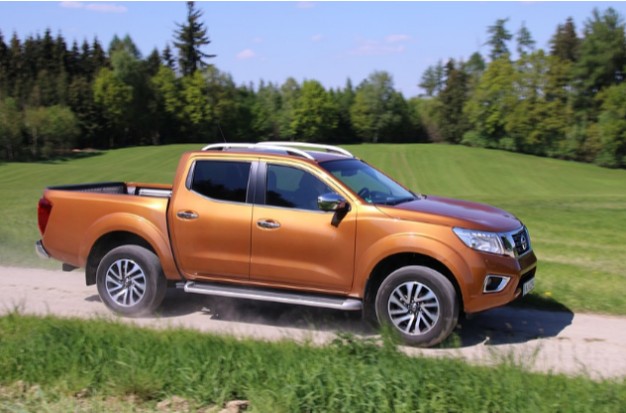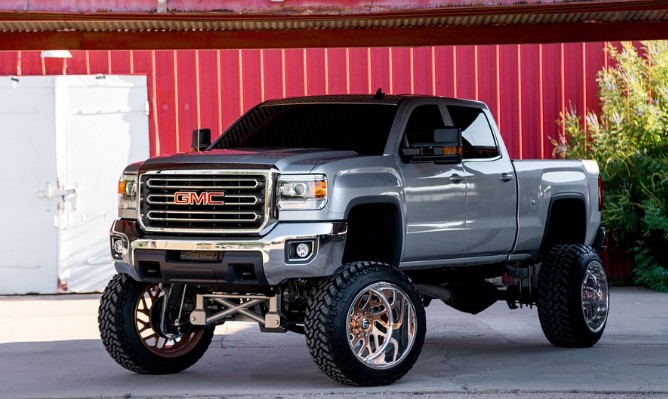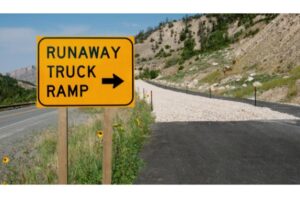
What Does OBS Truck Mean – What You Need to Know
Most likely, you’re familiar with that significant U.S. auto manufacturers overhauled many of their truck designs in the late ‘90s and early 2000s. Fans of the previous look referred to this distinctive era as “OBS truck”, which is an abbreviation for “old body style” pickups. However, that is a rather vague definition. This car reviews article will provide insight into “what does OBS truck mean” and some of the most notable examples on the market.
What Is An Obs?
An OBS truck’s production year is typically its only restriction. Interestingly, some gearheads also coined the term “OOBS” to describe “old, old body style”, which is to be distinguished from The only other requirement for an OBS truck is that it be made in the United States, though occasionally a desirable import model with the same style is also referred to as an OBS truck.
OBS, otherwise known as “old body style,” refers to Between 1988 and 1998, General Motors produced Chevy C/K pickup trucks. The C/K included a variety of vehicles in addition to a truck and two SUV models, and these trucks were sold under the GMC and Chevrolet brands. The line includes medium-duty and heavy-duty trucks even though they’re typically associated with pickup trucks. The “K” refers to four-wheel drive, while the “C” references two-wheel drive.
The Fleetside Extended Cab, Fleetside Single Cab, Fleetside Crew Cab, and Stepside Single Cab models are among the eight variations of the C/K line that General Motors released in 1988. These were all available in 2WD or 4WD. These trucks were available in Scottsdale, Silverado, and Cheyenne trim levels.
General Motors was committed to creating the best truck in America in 1988 and wanted to make their trucks more similar to cars. They deemed it the “an example of American success.” A brand-new, cutting-edge product was what Chevrolet wanted. At that point, trucks were designed to haul manure and dirt, not be “cool,” but when the 1988 was introduced, it changed everything.
That, along with assistance from the aftermarket sector, contributed to the success of the body style. The truck was aggressively marketed by General Motors because they were aware they had a big thing on their hands. It was successful.
What Does C10 Stand For?
When we say “C10,” we often think of a particular car, but what does the letter mean exactly? Your search for a vehicle will determine the answer. C10 refers to a half-ton, two-wheel drive pickup when referring to a Chevrolet. One of the most well-known pickups on the market since its introduction in 1960 is the C10.
Chevrolet used the C10 model from 1960 until 1987. It was the business’s first half-ton pickup truck with two-wheel drive. These trucks were lower to the ground for easier access and had a double-walled steel pickup box. They were attractive and had impressive specs. The “C” represents two-wheel drive, which indicates the capacity of the truck.
There are three generations of the C10, and each has a different bed length. Because it has a sportier aesthetic and outperforms a long-bed version on an autocross course, the short-bed version is popular among builders. Some contractors also shorten the beds on long-bed trucks. The choice to convert should be based solely on personal preference, but this is entirely up to the owner.
What Is Causing The Obs Surge?
This trucks have recently attracted a lot of interest. It’s the perfect time for a trip down memory lane for a young person who was into the sport truck scene in the 1990s and is now in their 40s or 50s. It’s comparable to the generations that rediscovered muscle cars in the 1990s and 2000s or street rods in the 1970s and 1980s. The sport truck crowd has made a financial commitment to reflect on their past, and it is evident that they are doing so.
While memories of your parents or grandparents owning one of these enormous trucks may be the driving force behind the majority of buyers, there is also interest from younger enthusiasts. These trucks are desirable for a number of reasons, including their clean design, ease of construction and disassembly, fuel injection, accessibility and affordability, and their enjoyment to slam or lift.
Parts like grilles and mirrors can be switched between the various years, and replacement-style and custom parts are both reasonably priced. It’s simple to remove the trim because adhesive held the majority of it together. Additionally, the trucks are very cozy and trouble-free, making them perfect for daily driving.
They’re not just amazing trucks; they’re also tough, fuel-injected, and you can find the parts you need without spending a fortune, which is what’s fueling the surge. Talking to ten enthusiasts will yield ten different responses. Simply put, these are cool, character-filled trucks with options based on your individual preferences. If you already own one, you are aware of what you have; otherwise, your feelings are understandable if you’re thinking about making a purchase.
While our reasons to purchase one may be influenced by anything we touched on above, it’s hard to deny that these trucks possess the “it” factor. Thankfully, many of them were made, so we will see them or have access to them for many generations to come.
How Reliable Are Obs Trucks?
An old truck can be beautifully customized without spending a fortune thanks to OBS trucks. They can be altered to your preferences and feature a sleek design, simple assembly, and reconstruction. They make excellent daily drivers because they are strong and trustworthy. They are a great option for any car enthusiast because they are surprisingly affordable.
OBS trucks have fuel injection and are very powerful. In addition, maintaining and finding parts for them is simple. OBS trucks have their own forums, websites, and salvage yards. Even the parts are simple to find, and many are offered by the Ford Motor Company. It’s crucial to be able to find parts that meet your needs because the OBS truck aftermarket is expanding quickly.
Ford, Chevrolet, and GMC are a few of the companies that produce OBS trucks. The GMT400, C/K series, and F-series are popular makes. A well-known OBS truck model produced by General Motors between 1988 and 1998 is the C/K series. It had a crew cab, two SUVs, and a pickup truck.
What Does The K In Chevrolet Trucks Mean?
Four-wheel drive is denoted by the letter “K.”‘ The number is higher for a truck with four-wheel drive than one without. The front axles and suspensions are different between the K and C models, but the chassis is the same in both.
The work-focused W/T 1500, the off-road Z71, and the potent 454SS were just a few of the specialized models offered by the C/K series. It additionally provided a C3500HD chassis cab for business use. Chevrolet added driver-side airbags and a third door on the passenger-side rear hinge in 1995 and 1996.
From 1960 to 1999, the US and Canada produced the C/K pickup truck line. The trucks were referred to as the D-20 in Brazil; the name was derived from the Grand Blazer. The Silverado and Sierra trucks took the place of the C/K trucks in 2001.
The C/K truck underwent a redesign by GM in 1968. The addition of a diesel engine made these vehicles the first full-size pickup trucks in America with this feature. Additionally, two SUV models were introduced. The Cheyenne was the model name for the second generation of C/K trucks. The foundation for today’s full-size SUVs is this generation of full-size trucks.
Most Common Obs Trucks
The OBS trucks are developing into highly sought-after classics, and as a result, their asking prices are more than reasonable. You should move quickly if you intend to purchase one to avoid further price increases.
The majority of old body style trucks, as was already mentioned, are American-made. The great three automakers—Ford, Chevrolet, and GMC—produce without a doubt the most in-demand models. The most notable models’ main attributes and other details are listed below.
Chevrolet And Gmc C/k
The Chevy C/K series was produced by General Motors between 1988 and 1998 and sold under the Chevrolet and GMC brands. The C/K series included medium-duty and heavy-duty trucks, despite being most frequently linked to pickup trucks.
Two different drivelines—2WD or 4WD—were available for each version of the line. The “C” denoted a two-wheel drive while the “K” denoted four-wheel drive.
For 1988, General Motors released eight distinct models of the C/K line, each available in 2WD or 4WD: the Fleetside Single Cab, Fleetside Extended Cab, Fleetside Crew Cab, and Stepside Single Cab models. The 1988 versions came in three trim levels: Silverado, Scottsdale, and Cheyenne.
Internally, GMT400 was the name of the common fourth-generation C/K platform. GMC initially called their full-size pickup trucks Sierra, while only Chevrolet used the C/K nomenclature.
Ford F-series
The seventh, eighth, and ninth generations of the F-series are referred to as the “old body style” models, though some enthusiasts would disagree and say that the seventh generation (1980–1986 model years) is too old and should be called “old-old body style.”
The regular cab, super cab, and crew cab configurations of the Ford F-150, F-250, and F-350 are the most widely used examples of the seventh-generation OBS. The 1980 F-series was a significant redesign of the 1965 model, receiving a brand-new chassis and an entirely new body with straighter body lines for better fuel efficiency.
The seventh-generation F-series had V6, Inline-6, and V8 engine options, with V8 engines being the most popular.
Although it was built using the same cab and chassis as the seventh generation, the eighth generation of the iconic Ford F-series (1987–1991 model years) was a significant update of the 1980–1986 models. The F-150, F-250, F250-HD, and F-350 are the most notable examples from the eighth generation for 2-door pickup or chassis cab configuration.
The main improvement is the vastly more streamlined design, which made maintenance less expensive and simpler than with any of its forerunners. The exterior also received many noticeable improvements, such as composite headlamps, circular fenders, revised body panels, and a completely new and more aerodynamic front fascia. The interior was also completely redone. Updated engine choices now have more power and better fuel efficiency.
Ford made its last F-series OBS trucks during the ninth generation (1987–1991 model years). It was the second redesign of the 1980 models and continued to use the seventh generation’s traditional architecture. Even with a facelift and a number of minor exterior and interior upgrades, such as a slightly lower hoodline and rounding the front fenders, bumper, and grille, the classic OBS appeal of the earlier F-series was effectively preserved.

How Were The OBS Trucks Altered By People?
Despite the fact that the OBS trucks’ design is very well-liked, people still made modifications to these vehicles to improve their overall appearance. The majority of OBS trucks lovers preferred to keep the engine and the major components as is while adding some modifications to the external and other minor features like the following:
- Repaint
Many owners chose to replace the vehicles’ paints with higher-quality ones because the classic OBS trucks might not have the best paint color to last longer.
There wasn’t any specific trend on which color or which brand was used to paint the OBS trucks, but the general reason for repainting these trucks was to either:
- Adding additional improvement to the appearance, especially with the two-color hue
- Improving the look by finalizing the paint with the high gloss finish
- Changing the color to a more protective one to keep the metal structure in a safe status
- Headlights upgrades
The fact that most OBS trucks do not come equipped with the best and most efficient headlights leads to a large number of customers upgrading both the headlights and the taillights. Customers, for instance, were able to improve the visibility of these trucks, save a ton of money on gas, and improve their overall appearance by installing new LED lights.
- Windows tinting
Another group of customers wanted to alter the windows’ overall appearance, and some of them tinted the windows to give them a more slick and eye-catching appearance.
- Vehicle exhaust system upgrades
Many OBS truck owners chose to replace their exhaust system with a more potent one. So, don’t be shocked if you see some vintage trucks with chrome exhaust tips.
- Tires upgrades
The OBS trucks can have a more eye-catching appearance to draw people on the road by upgrading the tires and swapping them out for one that is more oversized. In order to increase their visibility on the road, many old body style trucks decided to raise their suspension systems.
Are Obs Trucks Trustworthy?
OBS trucks are becoming more and more popular as the market for vintage cars and trucks expands. OBS trucks are reasonably priced, have a clean, vintage aesthetic. They also have a straightforward design and are surprisingly robust and trustworthy. They can be tailored to the owner’s preferences and are also comfortable to drive.
Several businesses, including Ford, GMC, and Chevrolet, produce OBS trucks. The GMT400 and F-series are two well-known models. The C/K series, which was produced by General Motors, featured two SUV models and a crew cab. OBS trucks are solidly constructed, fuel-injected, and surprisingly dependable.
The OBS model was unaffected by GM’s redesign of truck designs in the late 1990s and early 2000s. The GMT400 moniker was given to this model; GMT800 later took its place. The OBS truck was manufactured from 1988 to 1998 and offered in a number of variations, including two-wheel drive and four-wheel drive.
Conclusion
OBS trucks are known as old body style trucks and were created prior to 1988. Since most upgrades concentrate on cost-saving designs, these vehicles had a distinctive design that you won’t find in the more recent ones.
Before settling on a final decision to buy an OBS truck, automotive experts advise that you assess your situation and precisely determine your goals and objectives. Since they could cost you between $10,000 and $20,000, these trucks are not exactly cheap. You must therefore be certain of your goals before buying this vehicle and be aware of its constraints.



Average Rating